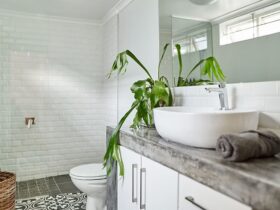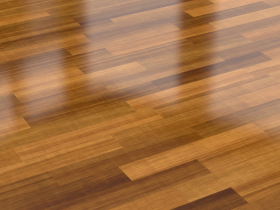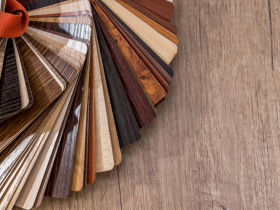Seamless flooring options like concrete and epoxy coatings, dominate the $388 billion flooring market nowadays. Yet, every smart homeowner knows that one type of flooring isn’t ideal for every room in the house.
So, if you’re looking around for the perfect type of floor for every room in your house, keep reading. Here’s a snapshot of all the best types of flooring, their pros and cons, and how they could work for you.
Polished Concrete Floors
Polished concrete floors are the latest trend for homeowners who want a seamless modern look for their homes.
They’re easy to clean and highly aesthetic when polished to a glimmering sheen. You can choose from a wide range of stains and etchings to suit your interior design.
Concrete’s also exceptionally durable, impervious to dents and scratches, and waterproof when sealed properly.
The problem with concrete is that it’s hard, cold, and heavy. If you’re installing a concrete floor you’ll need an engineer’s help to determine the right course of action.
Concrete flooring’s never a DIY job either, so you could end up paying a premium for the labor to install this relatively cheap material.
Hardwood Floors
These are the best types of floors if you like the classic look and want a floor that will last a very long time. You can refinish hardwood floors several times during their decades-long lifespan.
The beauty of solid hardwood comes from nature itself. You can choose from several different species of tree, each with its own texture, color, and unique patterns. Different cuts and flooring configurations can also change the appearance of your floor.
Since it’s a natural material, hardwood’s susceptible to fluctuations in humidity and temperature. It doesn’t stand up well to water, which can cause it to swell. It’s also easy to scuff or stain your hardwood floor during everyday use.
Hardwood floors need a little extra care and careful cleaning, but they’ll reward you with long-lasting good looks and an inimitably comfortable feel underfoot.
Hardwood floors work best in living rooms, bedrooms, dining rooms, and hallways but they aren’t suitable for kitchens, bathrooms, and basements.
One of the major drawbacks of hardwood flooring for most homeowners is the high cost of installing them.
Engineered Hardwood Flooring
Engineered wood flooring closely imitates the look of hardwood flooring at a fraction of the cost. This type of floor’s made from a thin sheet of solid wood on top of a layer of high-density fiberboard or plywood.
Thanks to this solid core, engineered hardwood’s resistant to warping and changes in temperature although it isn’t waterproof. It’s more environmentally friendly than hardwood, since it uses fewer trees, and you can sometimes resurface it too.
Since there’s less wood involved, it’s also a cheaper option. It won’t last nearly as long as hardwood flooring although it’s just as susceptible to scratches and scuffs.
Tile Flooring
There are four main types of tile flooring, namely stone, ceramic, porcelain, and cement tile flooring.
You can also choose from glazed or unglazed surfaces when it comes to ceramic or porcelain tiles. Glazed tiles have a smooth, shin appearance, while unglazed tiles are a little rougher and more rustic.
Nowadays, wood-look ceramic til’s one of the most popular choices for homeowners. It looks almost identical to hardwood flooring without any of the drawbacks.
Tile flooring resists water, it’s impervious to temperature fluctuations and easy to care for. The disadvantages of this type of flooring are its brittleness, and the tendency for some kinds of tile to stain easily i.e. marble tile.
Resilient Types of Flooring
Resilient flooring encompasses all types of solid floors that also have a certain amount of ‘give’. They’re a durable and affordable type of flooring with several different attractive varieties to choose from.
These are the main types of resilient flooring.
Vinyl Flooring
Vinyl tile, planks, and sheets are among the best flooring options if you’re looking for a water-resistant floor. This durable, synthetic flooring is often designed to mimic the look of wood, but it’s also available in almost any design you could desire.
This type of floor consists mainly of PVC, but it doesn’t have a plastic look. The luxury look and feel of these tiles, sheets, and planks make it one of the fastest-growing flooring segments in modern times.
Like laminate flooring, vinyl floors have layers as follows:
- A base of vinyl
- A design layer printed with the motif of your choice
- A transparent wear layer to protect the surface of the floor
You can choose between rigid core and flexible core vinyl flooring and the rigid core option has the better feel underfoot. This type of floor lends itself to glue down as well as click-lock installations and some even have a peel-and-stick application.
Aesthetics and simplicity aside, vinyl flooring’s also supremely durable, affordable, and waterproof too.
Laminate Flooring
Laminate flooring mixes all the best parts of vinyl and engineered hardwood flooring. Like engineered hardwood, it has a bottom layer of high-density fiberboard and like vinyl flooring, the middle layer consists of a high-quality print.
Some laminate flooring has a fourth layer underneath for comfort or soundproofing. It’s usually installed as a floating floor with a soft underlayment, and you can either glue or click it into place.
Thanks to its tough upper wear layer, durability is the key advantage of laminate flooring. It doesn’t chip, flake, warp, or fade in the sun and it’s super-easy to keep clean, and it’s an affordable flooring too.
These benefits of laminate flooring mean you’ll enjoy years of convenience when you choose a laminate floor.
On the downside, you can’t refinish or repair this type of floor, and some of the cheaper versions have an artificial look and feel.
Find the Solutions You Need
With so many different types of flooring to choose from, you’re bound to find something that suits your style, your needs, and most importantly your budget.
You might also consider if you’re invested in your property for the long haul, or if you’re likely to sell it soon.
Browse our website for more top-notch tips for improving your home, whichever stage of the homeownership journey you’re in now.












